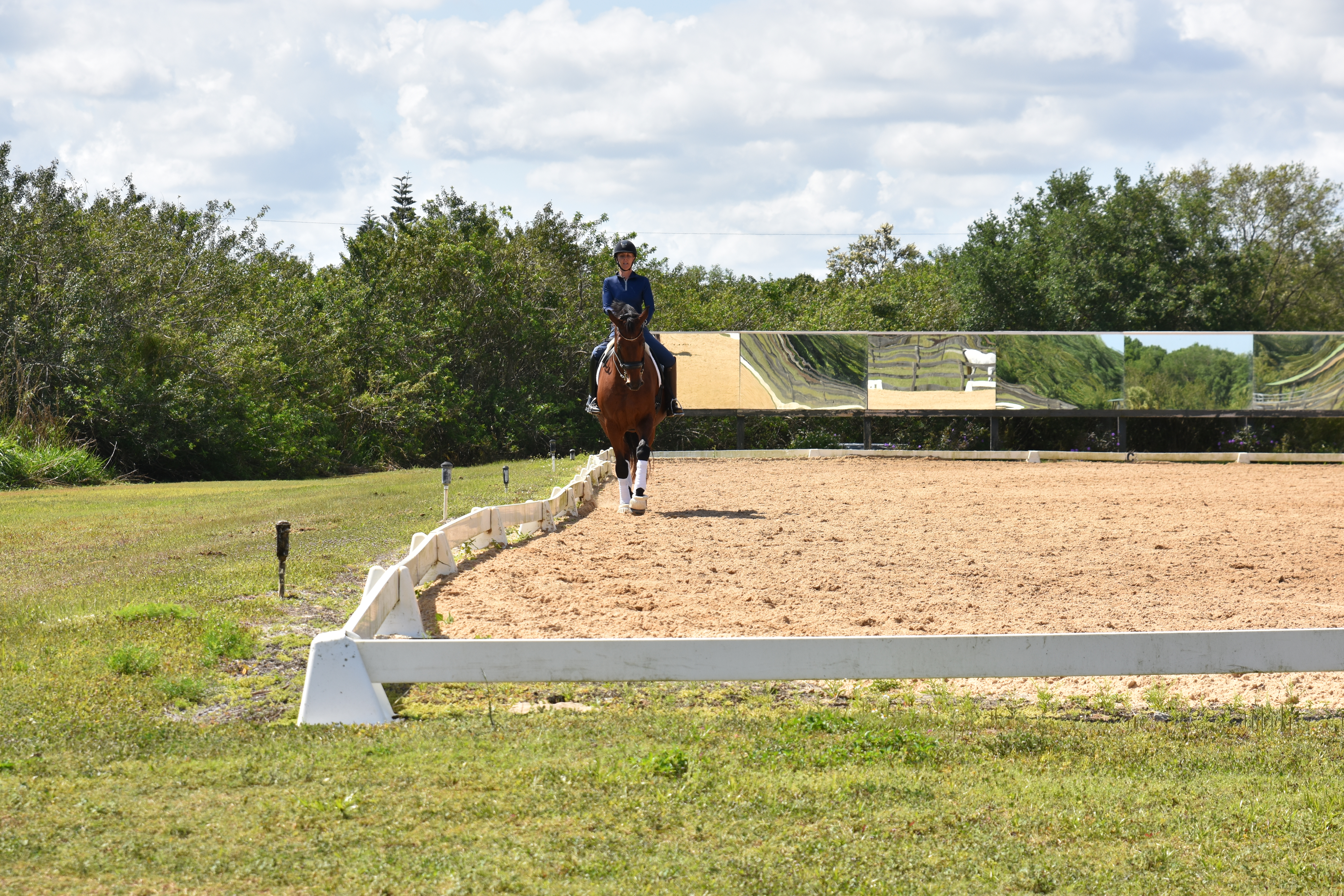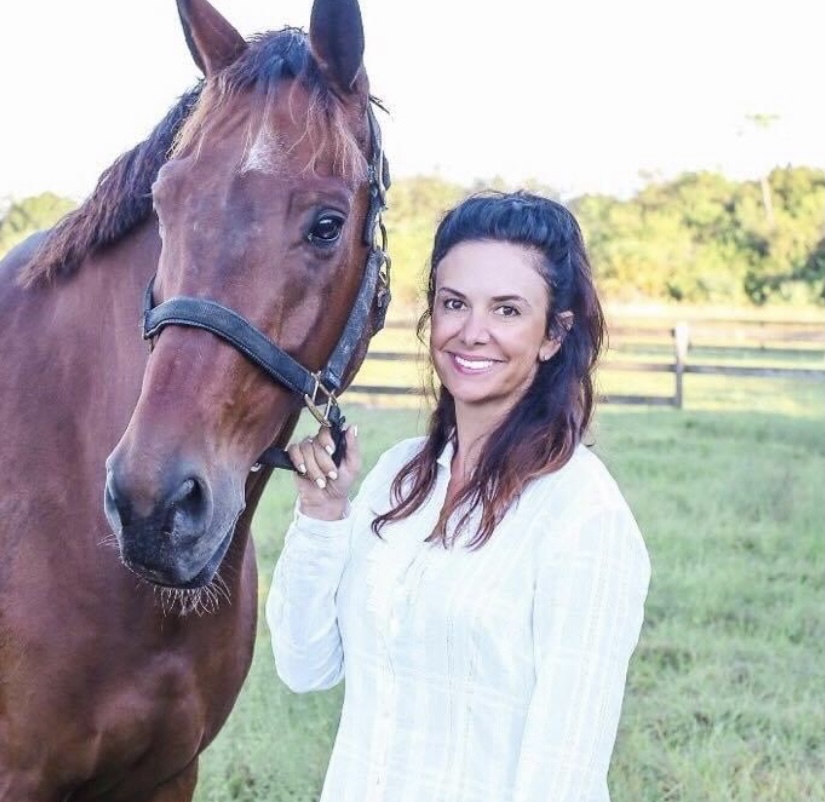Para-rider Katie Jackson is missing her right leg below the knee. Her right thigh is strapped to the saddle, and she carries a whip in her right hand. “She is a beautiful rider,” says trainer Chrissa Hoffmann, “but she’s had to work very hard in her seat and her body alignment to keep [her horse] straight. Where we take for granted that we keep the horse straight between two legs, she has to work a little bit harder, but she does an excellent job at it.”

Jackson purchased her Grand Prix horse Scrabble from Hoffmann in November 2020, and they’ve been working together ever since.
“The piece that we’re trying to put together right now is that any good, well-trained Grand Prix horse has many different gears and buttons, and they’re very fine-tuned,” Hoffmann explains.
“What we’re helping Katie with is to keep the regularity of the trot because he can get a little bit too expressive right now. Also, he knows dressage quite well. He’s very talented, and so she must not overdo the half-halt or he gets into that passage trot that’s not very forward thinking for him.
“The other thing that’s a little bit different for Katie is that this horse has a huge amount of movement and scope,” Hoffmann said. “She’s had to really get her seat dialed into him because she’s learned to really ride from her seat and to ride these bigger gaits.”

As they progress through a lesson, Hoffmann offers tips applicable to any rider, not just one with a disability. Here are 15 of her best takeaways.
- Keep the warm-up very basic with a natural working trot where the horse can stretch the neck and find a place where he’s comfortable.
- If you have a horse that wants to be connected to the rider’s seat bones, warm up at the sitting trot.
- When you have one side (in Jackson’s case, the right side) on which you have to work harder to keep the horse straight, open up your shoulder on that side, which opens the chest. When your torso opens on the right side, the horse moves away from it, and the right seat bone comes down.
- Keep the horse in front of your leg as well as your seat. When you give the aid to go forward, don’t let him hang too much in the air.
- When you ask for a more forward trot, the horse covers more ground but keeps the regularity of the gaits.
- The horse must respect that forward feeling from your seat and respond. If he doesn’t, use the whip a little. Then leave him alone.
- When you think forward, the horse feels the drive and then you just sit in neutral. If you start to build more expression, build the power behind to keep the gaits regular.
- In the extended trot, the first step you start with is the one you should finish with.
- Many riders think passage is slower, but that is incorrect. In passage, you need to feel that the extended trot is available at a moment’s notice.
- Capture the horse’s energy into passage. What you should feel is that the horse pushes up into the contact, keeps the withers up and rocks back on the hind legs. Then when you go out of the passage, the horse is in the right balance.
- When the rider’s seat acts as a driving aid, the horse covers ground. When her seat is quiet, the horse collects.
- Make sure in collection that you don’t hold the rein. Be able to give the second you bring him back.
- When schooling flying changes, don’t override them. Sit square and make sure your aid is not too quick for his stride. He can get short behind.
- It’s very common for riders to try harder when something isn’t happening. We get into that desperate feeling, and that doesn’t help the horse at all.
- Quality riding really goes back to basics of rhythm, regularity, the correct contact and the correct outline. Those things, at the end of the day, are what gets the points in a test.
Recently, Katie Jackson and Scrabble showed at a licensed show at the World Equestrian Center in Ocala, Florida. They finished third with 66.923% in an open Fourth Level test and second in the open Prix St. George with 65%.
Find more on DTO!
Visit OnDemand.DressageToday.com to watch Chrissa Hoffmann’s training collection, which includes working with a para-rider, riding an upper-level school master and schooling a horse with a tongue issue. Sign up for a 10-day free trial with a subscription.
About Chrissa Hoffmann

Chrissa Hoffmann is an international Grand Prix rider who was long-listed for the USET in 2009. She is a U.S. Dressage Federation bronze, silver and gold medalist. She also owns and operates CFH Dressage located in Vero Beach, Florida.
This article originally appeared in the Winter 2021 issue of Practical Horseman.










